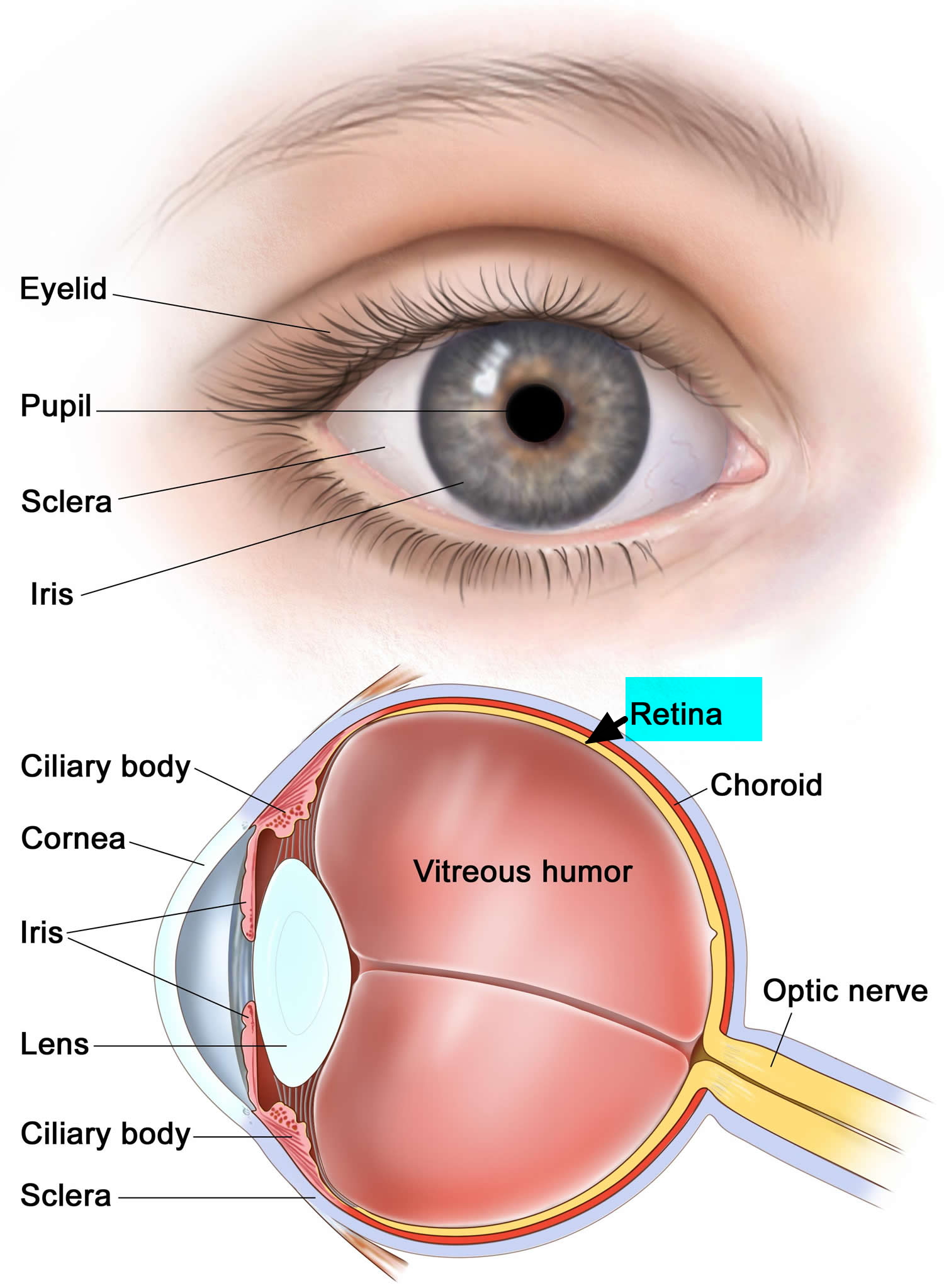
Contact Associated Retina Consultants at 60 or to schedule an appointment today. Keep them healthy by maintaining regular vision exams. Our eyes are vital for seeing the world around us. It is mostly water and gives the eye its form and shape. Vitreous Gel: A thick, transparent liquid that fills the center of the eye. It contains millions of photoreceptors (rods and cones) that convert light rays into electrical impulses that are relayed to the brain via the optic nerve. Retina: Light-sensitive tissue that lines the back of the eye. It changes size as the amount of light changes. Pupil: The opening in the center of the iris. Optic Nerve: The nerve that transmits electrical impulses from the retina to the brain. Macula: The small area at the center of the retina responsible for what we see straight in front of us. Lens: A crystalline structure located just behind the iris – it focuses light onto the retina. But light does not impinge on the retina unaltered. The photoreceptive cells of the eye, where transduction of light to nervous impulses occurs, are located in the retina (shown in Figure 1) on the inner surface of the back of the eye.

Iris: The colored part of the eye that controls the amount of light that enters the eye by changing the size of the pupil. The human eye is an organ that reacts with light and allows light perception, color vision, and depth perception. Nutrition of the eye is dependent upon blood vessels in the choroid.Ĭiliary Body: the part of the eye that connects the iris to the choroid.Ĭornea: The clear, dome-shaped tissue covering the front of the eye.įovea: A tiny pit located in the macula of the retina that provides the clearest vision of all. Let’s look at a few of the main parts of this vital organ:Īnterior Chamber: The space between the cornea and the iris, filled with the aqueous humor.Ĭhoroid: The vascular layer of the eye, containing connective tissue. It is well known that mammalian ganglion cells comprise more than a dozen types, clearly distinguishable from one another in structure and function.
:max_bytes(150000):strip_icc()/eye-myopia--nearsightedness-871453998-5a26cbd57d4be80019203b2c.jpg)

It is made up of many distinct parts working in unison together and in order for the eye to work at its best, all parts must work well collectively. Berson, inThe Senses: A Comprehensive Reference, 2008 Ganglion cellsare the only retinal neurons communicating directly with the brain. The eye is one of the most complex organisms in the human body. Even though the eye is small, only about 1 inch in diameter, it serves a very important function – the sense of sight.


 0 kommentar(er)
0 kommentar(er)
